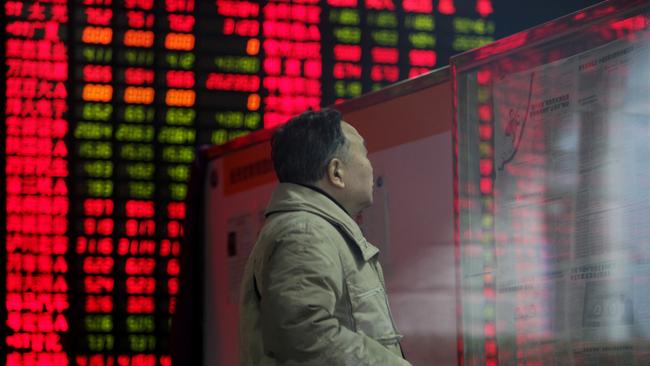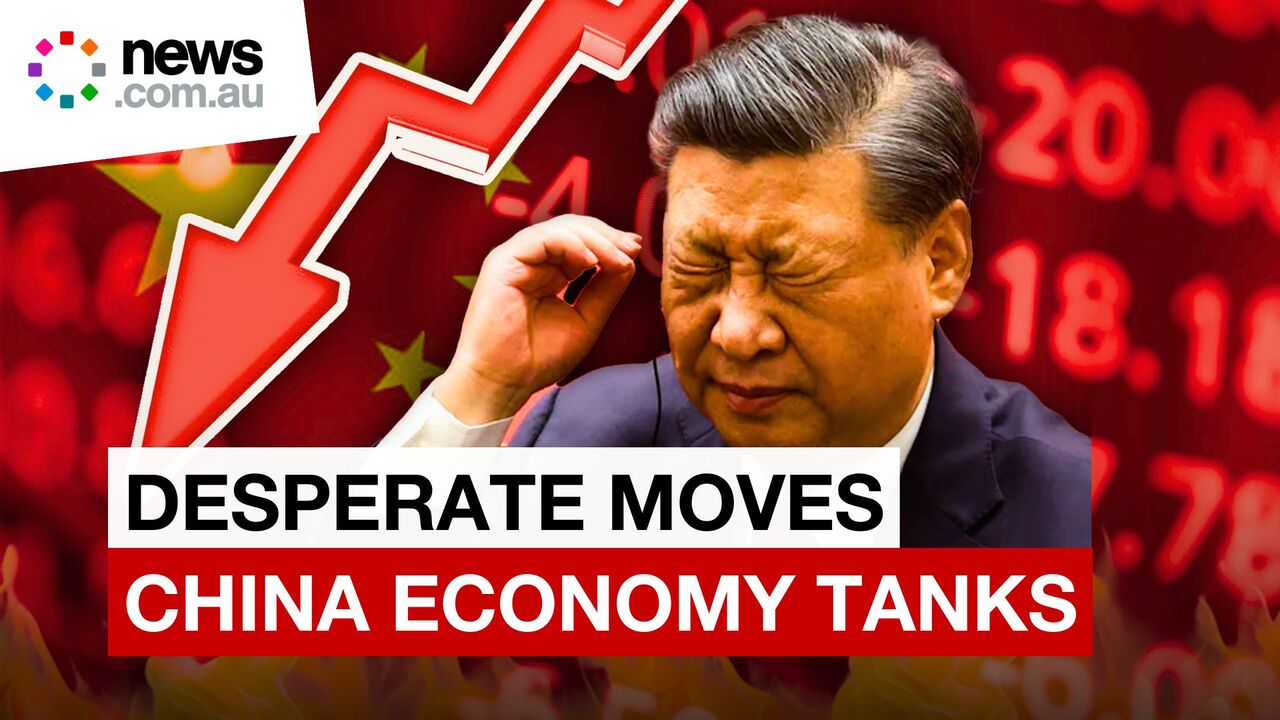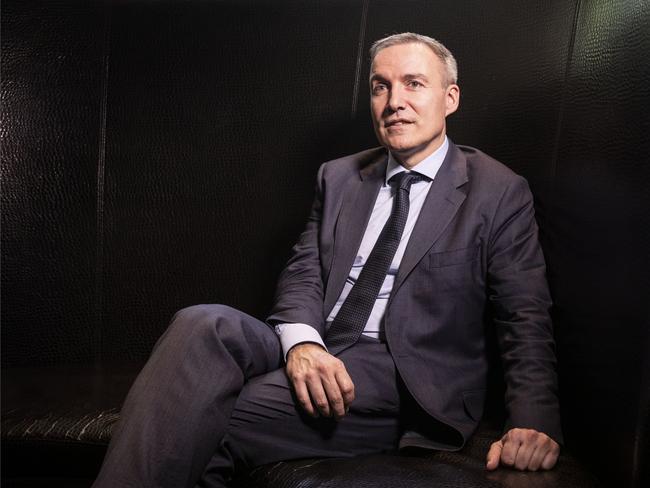The five scenarios that could shape global markets
UBS is expecting solid gains in US stocks, albeit with a range of possibilities depending on how a handful of major events play out.

After a deep dive into how the US election, tariffs, China and geopolitical risk could shape global markets, UBS comes away expecting solid gains in US stocks, albeit with a range of possibilities depending on how the major events play out.
The economics and strategy team modelled five scenarios including: a Red Sweep in the US election; a Blue Sweep; a significant increase in global tariffs post-election; a US recession; and a “no-landing” scenario which would imply that central banks globally have eased prematurely.
UBS also looked at what kind of China stimulus would be needed to move the needle, as well as how a potential oil supply shock stemming from the Middle East conflict would affect inflation and central bank policy.
Its baseline forecasts are quite rosy: the S&P 500 rises to 6400 in 2025 and 6850 by 2026, implying an 18 per cent rise. The STOXX 600 adds 11 per cent and MSCI China soars 21 per cent.
The Fed funds rate target range falls 2.75-3.00 per cent by 3Q25 and stays there through 2026, while the 10-year Treasury yield dips to 3.8 per cent next year before rising to 4.4 per cent in 2026.
US economic growth cools to 1.3 per cent by 2Q25 – still outpacing the Eurozone – and US CPI inflation bottoms at 2.1 per cent in 1Q25.
Gold jumps 15 per cent to $US3000 per ounce in 2025 before fading to $US2700.
USD/JPY hits JPY130 by the end of 2025 and JPY125 by the end of 2026, while EUR/USD rises to €1.12 by the end of 2024 and €1.15 by the end of 2025.
But of the five alternate scenarios looked at by UBS, only the Red Sweep gets the S&P 500 up to the base case forecast. It’s also the most positive scenario for the US dollar.
A US recession would be the most negative for the greenback, and the most positive for gold, while a Red Sweep would be the most positive, even with substantial tariffs.
A Blue Sweep is markedly-less positive for the US benchmark. However, a Blue Sweep is notably more positive for European and China stocks than the Red Sweep scenario.
A Blue Sweep also sees less demand for US assets adding to USD softness.
The Red and Blue sweep scenarios are remarkably similar for the economic outlook, though a Republican administration would generate a few tenths extra growth in 2026, and near permanent budget deficits of about 7 per cent of GDP, according to UBS modelling.
Potentially linked to a Trump victory, but a more extreme version of what UBS has modelled for a Red Sweep, is the global tariffs scenario.
Trump has called for a 50 - 60 per cent tariff on China and 10 per cent on other countries but the Red Sweep scenario only assumes tariffs for China with exemptions.

Tariffs are mentioned 259 times in the 74 page report by UBS - and chief economist, Arend Kapteyn, says a significant lift in tariffs would be the “most impactful” scenario globally.
A 60 per cent tariff on China and a 10 per cent tariff on the rest of the world would lower 2026 global growth by 1 percentage point and cut 0.5 percentage points of the US.
“Private demand falls by a multiple of GDP and corporate profits on average would fall by 6 per cent,” he said. Interestingly, there are tariff scenarios where US growth is positive.
The S&P 500 dives 21 per cent to 4,600 over the next 12 months before recovering to 5,650 through 2026 in the tariffs scenario. The MSCI China and EM indexes fall about 10 per cent and the STOXX 600 dives 19 per cent within 12 months.
Perhaps unsurprisingly, the worst case for the US is the recession scenario as the economy contracts at an annualised rate of 1.3 per cent by the September quarter of 2025.
That drops the S&P 500 28 per cent to 4,150 by 3Q25, before a slow recovery to just 5,175 by the end of 2026.
Of course a US recession is also bad for European, China and EM stocks.
It also prompts the biggest rise in gold – to $US3300 in 2025 and $US3400 per ounce in 2026 and the biggest fall in the US dollar. USD/JPY falls to 122 by 2025 and EUR/USD ries to €1.2000 by 2Q26 in that scenario.
“The US recession scenario generates the widest move in global policy rates: a few tenths of extra disinflation and weaker growth and employment allows central banks to become outright accommodative,” Mr Kapteyn said.
Six central banks including the Fed, BoJ and BoC, but not the ECB or BoE, return to the lower bound.

The Fed funds rate target gets slashed all the way to its Covid-era lows of 00-25 basis points, quantitative easing is possible, and the 10-year Treasury yield hits 2.5 per cent by 2025.
“In this scenario, the Fed’s rate cuts are insufficient because of monetary policy lags or do not come fast enough to arrest the negative feedback loop setting in. But in response to the sharper-than-expected slowdown, and falling employment, the Fed shifts policy from removing excess restrictiveness to outright accommodation, lowering rates well below neutral,” Mr Kaptyn said.
“Knowing QE and forward guidance are controversial and caused problems in the pandemic, the FOMC pushes the funds rate as low as it will go to prevent job loss and restart activity. The target range is taken back to the zero lower bound, prompting a subsequent resurgence in activity.”
By contrast, the ‘Central Banks eased too early’ scenario generates much higher economic growth and earnings but comes at a cost of a complete reversal of the central bank rate cuts that are currently priced into markets, leading to a correction in equity market valuations in 2025.
According to UBS, that would push the S&P 500 down about 7.6 per cent and the STOXX 600 down 10 per cent over the next 12 months, and gold would fall back to $US2,000 over 2025.
But UBS sees the MSCI China holding up and rising 10 per cent by 2026 in that scenario.
With Iran oil facilities now explicitly a potential target for Israel, UBS also notes that the risk of a spike in oil prices has increased.
“Should further escalation materialise, UBS’s oil team expects Brent to rise further into the $US80s, and possibly closer to $US90 a barrel,” Kaptyn said.
Relative to the early September lows of $US68, that would imply an increase of 32 per cent.
There are only five months since the early 1970s when Brent increased by more.
But one factor potentially helping keeping oil prices in check is the current ample spare capacity within OPEC.




To join the conversation, please log in. Don't have an account? Register
Join the conversation, you are commenting as Logout